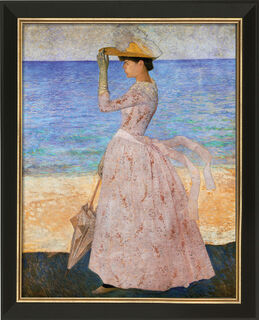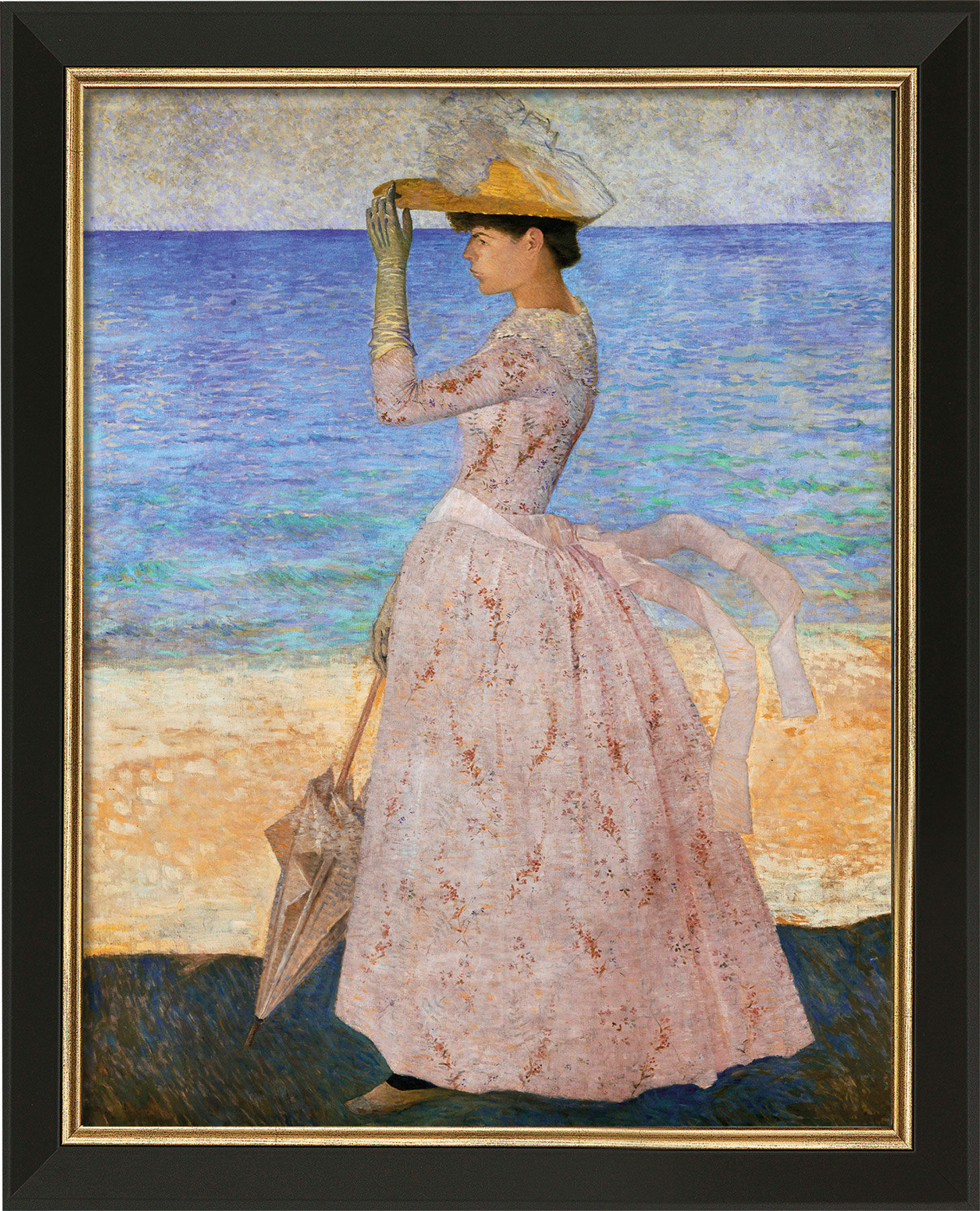Picture "Woman with Parasol" (1895), framed


Picture "Woman with Parasol" (1895), framed
Quick info
limited, 499 copies | pigment print on canvas | on stretcher frame | framed | size approx. 51.5 x 41.5 cm (h/w)
Detailed description
Picture "Woman with Parasol" (1895), framed
The conscious renunciation of spatial depth and the emphatically two-dimensional structure of the background are reminiscent of his tapestries, with which he also caused a sensation.
Original: ca. 1895, oil on canvas, Musée d'Orsay, Paris.
High-quality Fine Art Giclée pigment print on cotton canvas, stretched on a stretcher frame. Limited edition of 499 copies. Framed in a handmade real wood frame. Size approx. 51.5 x 41.5 cm (h/w).
Frame configurator
Customised picture frame

Frame configurator
Customised picture frame






About Aristide Maillol
1861-1944
Alongside Auguste Rodin, who held him in high esteem, Aristide Maillol is one of the most important French sculptors of his generation. Yet his path to sculpture was quite unusual: It was around 1895 when he was in his mid-thirties, he began to work seriously with sculpture in wood and clay. He began working as a self-taught artist after studying painting at the École des Beaux-Arts in Paris. Maillol had initially became known as a painter and graphic artist clearly influenced by Paul Gauguin. However, he had already expanded his means of artistic expression early on by working intensively with ceramic art and with woven and knotted works. Maillol's first major solo exhibition was a compilation of tapestries and early small sculptures. From the turn of the century onwards, he concentrated more and more on sculpture.
On the one hand, Maillol's sculptures refer strongly to classical sculpture with their emphasis on evenness and balance. On the other hand, they take steps towards abstraction and, precisely because of this, he became a model for the following generation of sculptors. His main theme was the female nude, which he executed as a harmonious, sensual femininity par excellence, although developed on a living model, renouncing individual features.
Maillol's best-known works include the large sculptures "The Three Nymphs" in the Jardin des Tuileries in Paris and, especially among German art lovers, "The River", a reclining female nude that can be admired in front of the Hamburg Kunsthalle.
Giclée = derived from the French verb gicler "to squirt, spurt".
The giclée method is a digital printing process. It is a high-resolution, large-format printout on an inkjet printer with special different-coloured dye- or pigment-based inks (usually six to twelve). The colours are fade-proof, i.e. resistant to harmful UV light. They have a high richness of nuance, contrast and saturation.
The giclée process is suitable for art canvases, handmade and watercolour paper as well as for silk.


